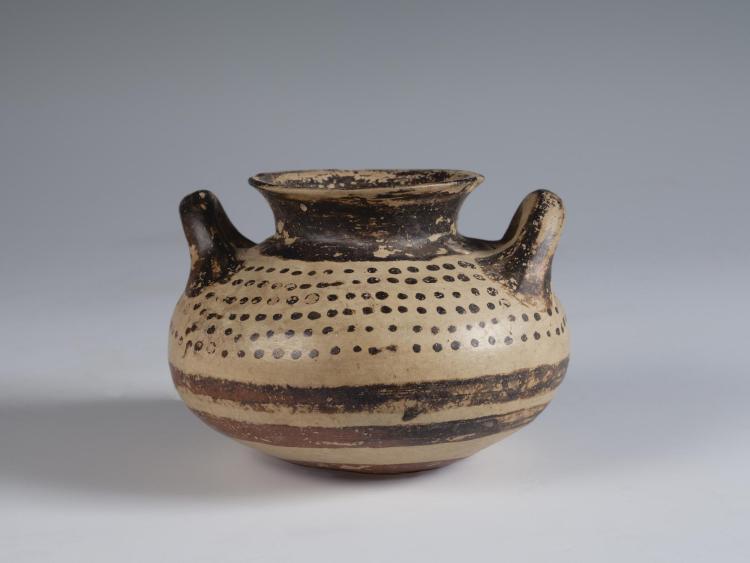The Uses of Olive Oil in Late Bronze Age Greece

Olive Oil in the Late Bronze Age
Our knowledge about the production and use of olive oil in the Late Bronze Age comes largely from series of clay tablets from archaeological sites dated to the Mycenaean Greek period (ca. 1,600 to 1,100 B.C.E.). The text on these tablets is written in a proto-Greek script called Linear B and, so far, they have primarily been found at Mycenae and Tiryns, as well as at Thebes, Pylos, Knossos (Crete), and Chania (Crete). These tablets were essentially record books used to keep track of the contents of the Mycenaean palace centers. The decipherment of Linear B was the result of work done by two American classicists, Alice Kober and Emmett L. Bennett, Jr., and two British classicists, Michael Ventris and John Chadwick. These tablets indicate that among its other uses, olive oil in the Late Bronze Age was sometimes perfumed and perhaps used in a religious context (1).
The CU Art Museum's collection contains several vessels from this period that may have served as containers for olive oil, including a Late Helladic IIIA stirrup jar. Two vessels, a two-handled squat jar dating to the Late Helladic I period (pictured here) and a three-handled squat jar dating to the Late Helladic IIIA period, may also have held olive oil.
This essay was written to accompany a collection of Greek artifacts at the CU Art Museum.
Footnote
- John Chadwick, The Mycenaean World (Cambridge: Cambridge University Press, 1976): 101.

